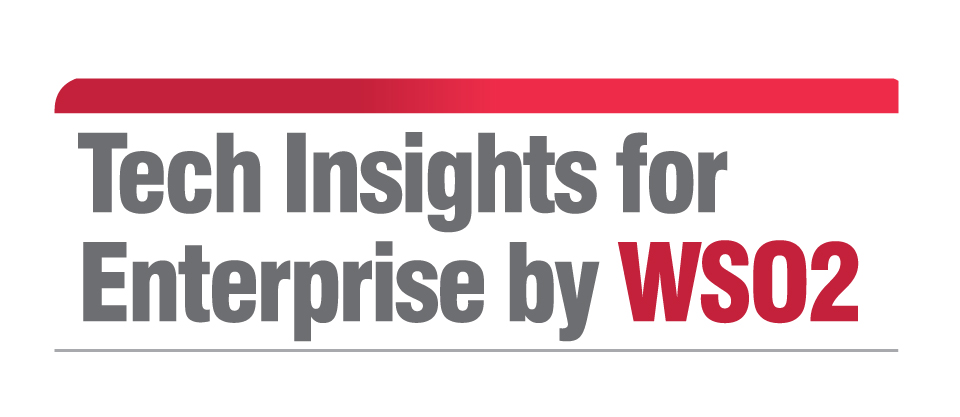Wednesday Apr 30, 2025
Wednesday Apr 30, 2025
Thursday, 29 September 2016 00:00 - - {{hitsCtrl.values.hits}}
By Asanka Abeysinghe
Technology today is changing and shaping the scope of the financial industry at a rapid pace. Customers are frequently looking for more convenient ways to interact with their respective financial institutions and carry out financial transactions in a fast, yet secure way. In other words, they’re looking for more self-service-like concepts via systems that are socially connected, simple, and useful.
While enterprises are well aware of these requirements, there are many challenges that may hinder their progress. In particular, given the sensitive nature of the industry and the need to adhere to stringent regulations, protocols, and standards, moves to develop a next-generation financial infrastructure will need to be done with careful consideration. Eventually, every financial enterprise will need to act fast to seamlessly connect its backend systems, offering value-added services to customers and becoming more competitive in the industry.
And given the time sensitivities with transactions carried out real-time, the type of architecture used should be one that supports the nitty gritties too.

Mobile, location, connectivity are key challenges
To be able to meet consumer demand as well as internal requirements, financial industry players should adopt a system that’s made up of a series of smaller systems that’s easy to manage, scale, and maintain. Within the industry itself, requirements, consumer space, competition, and regulations are constantly changing so enterprises need to adopt cutting edge technology that’s lean and flexible. That said, picking the right technology isn’t so straightforward either.
Enterprises would first need to consider key challenges like mobility, location, and connectivity before flipping the coin to decide their course of action. Customers are now increasingly using mobile and smart devices to carry out their financial activities and they want to be able to access data at anytime from anywhere. Connectivity between institutes is also key as customers may use different financial institutions based on their location and need. Other requirements centre around faster and more convenient ways of carrying out activities; for instance, using technology to develop certain financial applications that enable a customer to take a picture of a cheque, upload, and deposit in an account, and integration of mobile payment systems that support currently available devices and sensors as well as new systems that will enter the market in the future. To this end, your enterprise would need to be able to connect everything to a central ecosystem to facilitate a real-time system as opposed to a batch-mode one that was prevalent in the old world architecture.
These would typically include day-to-day operations like HR and CRM systems and financial-related applications that come from the old world as well as many new systems that would eventually be added on. There are various business user needs as well, such as dashboards and reports, which would require you to pull out data from the current repositories and provide these in a format that would meet business user requirements, like reporting, monitoring, managing, etc. The infrastructure would also need to include regular, day-to-day functionalities and call centre-type functionalities, virtual payments, credit card payments, and payment gateways, among others.
Connectivity is the core of your next-gen architecture
The first step in this direction is to connect everything in different systems, thus connectivity is crucial in building your next-generation finance architecture. There are many key backend components that need to be seamlessly connected. In the modern world, services are implemented and APIs makeup the consumable unit, therefore, enterprises would typically expose all back-end functionalities as a service and then services are exposed as APIs.
 It’s also important that you bridge financial protocols with open standards where you describe what parts of your financial message or protocol bridges into the open standard and do the conversion. To manage confidentiality and compliance, your enterprise might be using different security standards, hence you would need to bridge security between these different systems, e.g. backend systems might be secured using Kerberos and frontend might be using OAuth or a SAML security token.
It’s also important that you bridge financial protocols with open standards where you describe what parts of your financial message or protocol bridges into the open standard and do the conversion. To manage confidentiality and compliance, your enterprise might be using different security standards, hence you would need to bridge security between these different systems, e.g. backend systems might be secured using Kerberos and frontend might be using OAuth or a SAML security token.
There are also many cloud applications that support business functionalities, including those in the financial sector and your internal systems would need to connect to the cloud via a set of cloud connectors. Nevertheless, given that the financial industry is a highly regulated one, there might be limitations on how much data you can move to the cloud and some data may need to be maintained in local data centres. In such situations, it’s useful to use a hybrid deployment where some processes and data are run in your data centres and some are moved to the cloud with proper processes for those architectures and then securely bridge the cloud and data centres.
Integration is primarily built on top of enterprise integration patterns and message exchange patterns; as a result, any technology or architecture should be able to support integration as well as message exchange patterns, such as request/response or publish/subscribe type of message exchange patterns. Routing and unification are important aspects that need to be considered as well – you might need to route messages and this can be header-based as well as payload or content-based routing, and you might be communicating using a specific financial protocol version (e.g. FIX), but internally be using a different protocol.
Therefore, you would need some sort of mediation to bridge the different versions. To make all of these work, event-driven architecture (EDA) has proved to be useful in the financial sector given the time sensitive nature of the industry and because all transactions are carried out real-time. EDA started out with publish/subscribe and the architecture was enhanced to an event-driven one, thus acting as a hub for multiple systems and thereby enabling updates to different aspects of information in a given entity.
It allows an enterprise to have a proper loosely-coupled architecture as well as a connectivity layer that you can change based on the dynamics of your business and set your enterprise up for greater efficiency and higher profitability.
(The writer is WSO2 VP Solutions Architecture. In his role, Asanka spearheads WSO2’s customer facing technical tasks and oversees the solution architecture and technical sales functions. He also provides consulting to key customers and conducts workshops specifically targeted at enterprise architects and technical managers. He has over 15 years of industry experience, which include implementing projects ranging from desktop and web applications through to highly scalable distributed systems and SOAs in the financial domain, mobile platforms, and business integration solutions.)
Discover Kapruka, the leading online shopping platform in Sri Lanka, where you can conveniently send Gifts and Flowers to your loved ones for any event including Valentine ’s Day. Explore a wide range of popular Shopping Categories on Kapruka, including Toys, Groceries, Electronics, Birthday Cakes, Fruits, Chocolates, Flower Bouquets, Clothing, Watches, Lingerie, Gift Sets and Jewellery. Also if you’re interested in selling with Kapruka, Partner Central by Kapruka is the best solution to start with. Moreover, through Kapruka Global Shop, you can also enjoy the convenience of purchasing products from renowned platforms like Amazon and eBay and have them delivered to Sri Lanka.
Discover Kapruka, the leading online shopping platform in Sri Lanka, where you can conveniently send Gifts and Flowers to your loved ones for any event including Valentine ’s Day. Explore a wide range of popular Shopping Categories on Kapruka, including Toys, Groceries, Electronics, Birthday Cakes, Fruits, Chocolates, Flower Bouquets, Clothing, Watches, Lingerie, Gift Sets and Jewellery. Also if you’re interested in selling with Kapruka, Partner Central by Kapruka is the best solution to start with. Moreover, through Kapruka Global Shop, you can also enjoy the convenience of purchasing products from renowned platforms like Amazon and eBay and have them delivered to Sri Lanka.